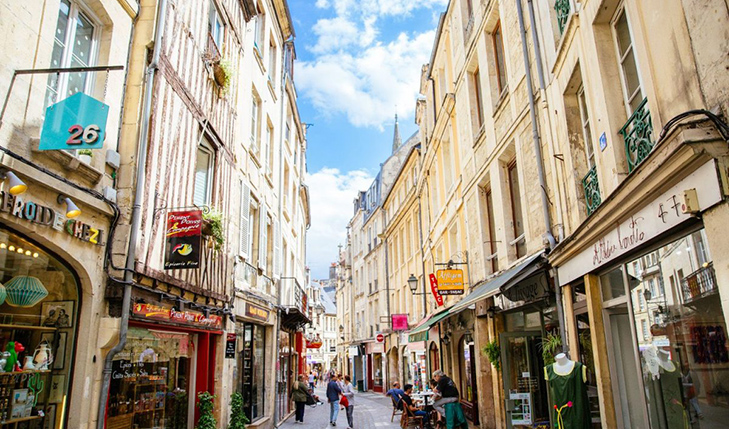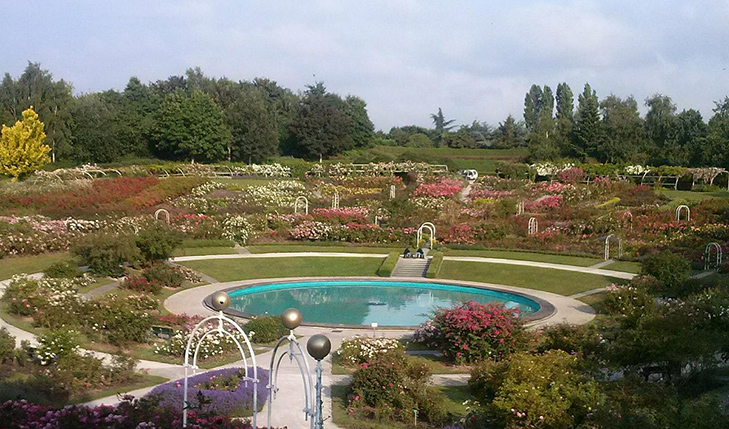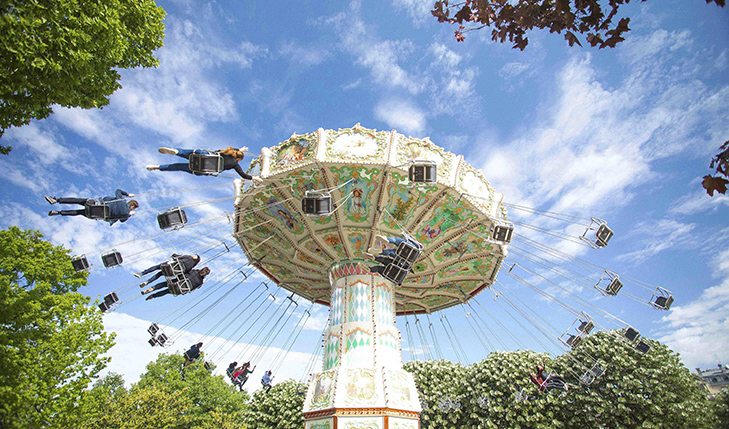My Personal Walks
1. Vaugueux & Hidden Medieval Caen
When I think back to wandering Le Vaugueux, it feels like stepping through a time portal. This small, historic quarter just east of the Château de Caen isn’t just about architecture; it’s about atmosphere. You enter through an unassuming archway and suddenly find yourself enveloped in a network of twisting alleys paved with uneven cobblestones. The air carries a faint scent of freshly baked bread mingled with the sea breeze from the nearby Orne river.
One of my favorite moments was stumbling upon La Petite Boîte à Fromages, a tiny cheese shop nestled inside a medieval building where the shelves seemed to hold the entire world of Normandy’s dairy heritage. I chatted briefly with the owner, who insisted I try a small sample of Camembert de Normandie—a creamy delight with a hint of earthiness that perfectly matched the surrounding rustic vibe.
Highlight:
A must-see is the Maison des Quatrans, one of the oldest half-timbered houses dating back to the 15th century, with its painted wooden beams still telling tales of medieval Caen. For photographers, the early morning light filtering through the narrow streets creates stunning contrasts, perfect for dramatic shots.
Logistics:
Getting here is simple — just a 10-minute walk from the main train station, Caen SNCF. The streets are pedestrian-only, which makes it perfect for a leisurely stroll. No reservations are needed. Visiting early on weekdays allows you to soak in quiet, as the streets fill up with tourists and diners in the afternoons.
Services:
Several cafés and small restaurants offer outdoor seating—great for people-watching or planning your next steps. I particularly enjoyed Le Vaugueux, a cozy spot that serves traditional Normandy dishes. Their Teurgoule (a spiced rice pudding) was the perfect comfort food after a long walk.
Pros:
- Authentic medieval ambiance
- Abundance of artisanal shops and cafés
- Great for photography and history buffs
Cons:
- Cobblestones can be slippery when wet
- Some narrow alleys may be challenging for strollers or large luggage
My Reflection:
I found myself returning to Vaugueux multiple times during my stay. It was like a heartbeat beneath the modern city — a reminder that Caen’s history pulses through these ancient stones.
2. Château Ramparts & Cemeteries of Caen
Exploring the Château de Caen’s ramparts was an unforgettable blend of history and nature. Built by William the Conqueror in the 11th century, the castle’s massive walls offer not only a deep dive into medieval warfare but also some of the most breathtaking panoramic views of Caen.
I started at the South Gate, ascending steep stone staircases that wind around the fortifications. From here, the city spreads out in all directions—the Orne river weaving through, the slate rooftops in orderly rows, and the distant Normandy countryside stretching toward the horizon.
Highlight:
The Castle Keep houses the Caen Museum of Fine Arts, which is a must-visit stop with works from Caravaggio to Monet. But for me, the best part was simply walking the ramparts, imagining the clang of armor and the chatter of soldiers defending this stronghold.
Just beyond the walls, I wandered through the Saint-Jean Cemetery, a lesser-known spot where locals have rested for centuries. The weathered gravestones and ornate ironwork give a somber, reflective mood—reminding visitors of the cycles of history and life.
Logistics:
Tickets for the castle and ramparts are €7 for adults, with discounts for students and seniors. The site is open daily from 10 AM to 6 PM in summer and closes earlier in winter. Audio guides can be rented for about €3. The castle is a 15-minute walk from Caen’s train station or accessible via local bus line Twisto 6.
Services:
There’s a small café inside the castle grounds where I grabbed a café au lait and sat watching groups of schoolchildren excitedly touring.
Pros:
- Rich historical context
- Stunning city views
- Accessible for most fitness levels
Cons:
- Some steep stairs and uneven surfaces
- Can get crowded midday
My Reflection:
Climbing the ramparts felt like walking atop history itself. At sunset, the golden light softened the stone and I felt a profound connection to Normandy’s layered past.
3. Abbey Quarter & Jardin de Luna Rossa
The Abbaye aux Hommes is a majestic Norman Romanesque masterpiece, founded by William the Conqueror himself. Walking into its courtyard feels like stepping into a different century. The massive stone pillars, soaring arches, and meticulously maintained gardens offer a contemplative space in the city’s heart.
Just a few minutes away, tucked behind the hustle of rue Damozanne, I found the Jardin de Luna Rossa — a hidden gem. This art garden feels almost secret, a tiny oasis of whimsy with colorful sculptures, mosaics, and small water features.
Highlight:
A life-sized mosaic bench shaped like a dragon curled beneath a tree became my favorite resting spot. The way light played on the tiles was mesmerizing, and the garden’s quiet charm contrasted beautifully with the abbey’s grandeur.
Logistics:
Both sites are free to enter. The abbey is open from 9 AM to 12 PM and 2 PM to 6 PM. Luna Rossa garden has no fixed hours but is best visited during daylight. It’s a 20-minute walk from the train station, or reachable via Twisto bus line 1.
Services:
There are nearby cafés offering light fare — I enjoyed a fresh quiche Lorraine with a glass of Normandy cider, soaking in the relaxed vibe.
Pros:
- Combination of history and contemporary art
- Free entry
- Peaceful atmosphere
Cons:
- Garden is small and easily missed
- Abbey can be busy during tourist season
My Reflection:
The juxtaposition of ancient stone and modern art in this neighborhood encapsulated Caen’s spirit—respect for tradition paired with creative reinvention.
Four Recommended Walks
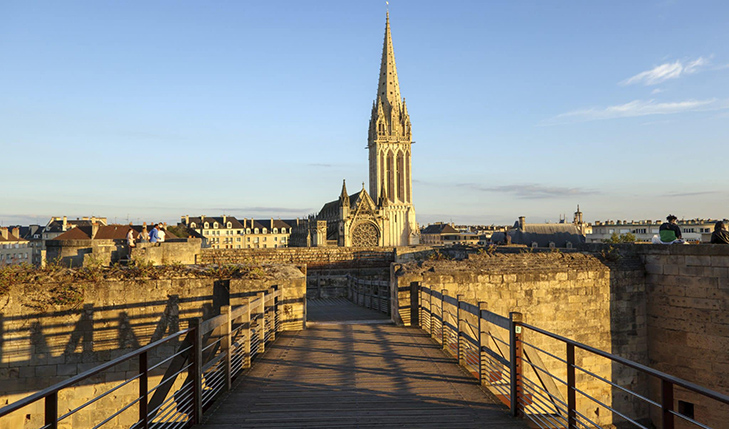
4. Explorial Scavenger Hunt in Old Caen
This interactive walking tour app transforms Caen’s streets into a live puzzle. I tried this with a couple of friends, and the blend of technology and history made it surprisingly engaging.
We started at Porte Saint-Pierre, solving riddles that led us to Église Saint-Pierre where we had to find a hidden symbol carved in stone. The clues sent us weaving through alleys, uncovering stories about local heroes and legends.
Booking & Cost:
Available via the Explorial app, this activity costs roughly €22 per team, making it affordable for families and groups.
Why It’s Great:
You control the pace, pause when you want, and explore lesser-known corners of the city that guidebooks often overlook.
Pros:
- Engaging for all ages
- Self-paced and flexible
- Great for groups or families
Cons:
- Requires a smartphone with good battery life
- Can pull focus away from simply enjoying the scenery
My Reflection:
The scavenger hunt sparked a playful sense of adventure, reminding me that walking tours don’t have to be solemn. Learning with laughter felt like the perfect way to uncover Caen’s layers.
5. Visit Sights Self-Guided Tour #3
This route offered a fascinating mixture of opulence and nature. From Hôtel Canteil de Condé—a stunning 18th-century mansion with wrought-iron balconies—to the serene Parc Michel-d’Ornano, it was a stroll through the city’s elegant past and its vibrant present.
Along the way, I admired the Gothic details of Église Notre-Dame de la Gloriette, and paused at Manoir des Gens d’Armes, an exquisite example of Norman residential architecture.
Logistics:
Maps and guides are downloadable from VisitSights.com. The 4.4 km route can be done in 2–3 hours at a relaxed pace.
Pros:
- Diverse architecture and greenery
- Free and flexible
- Good mix of indoor/outdoor sights
Cons:
- Some parts near busy roads
- Limited signage, so navigation requires a map
My Reflection:
This walk showed me the elegance hidden just off Caen’s bustling center. Sitting on a bench in Parc Michel-d’Ornano, I felt like a local escaping the tourist trail.
6. Visit Sights Self-Guided Tour #5 — Castle Walls to Garden Valley
At only 3.3 km, this short walk is perfect for an afternoon or when you want a light excursion. Starting near the Château de Caen, the route passes the Université de Caen Normandie, whose modern lines contrast beautifully with the medieval castle walls.
Further along, the quiet Cité-jardin des Rosiers neighborhood and Vallée des Jardins park invite reflection amidst flowers and fountains.
Pros:
- Compact and manageable
- Mixes historic and modern urban landscapes
- Excellent for photography lovers
Cons:
- Less “touristy,” so some areas feel residential
- Limited refreshment stops along the way
My Reflection:
I enjoyed the calm contrasts here—the ancient stones beside new university buildings, nature tucked inside the city. It felt like a perfect microcosm of Caen’s evolving identity.
7. Abbeys of Men & Women Loop
This walk invites you to discover the intertwined stories of Abbaye aux Hommes and Abbaye aux Dames, both founded by William the Conqueror and Queen Matilda. I marveled at their soaring arches and cloistered gardens—spaces of peace amid a vibrant city.
Walking between the two abbeys along Rue Reine Mathilde, I soaked up the spiritual serenity while imagining the centuries of monks and nuns who lived and prayed here.
Logistics:
No ticket needed to walk the public streets between the abbeys. Guided tours of the abbeys can be booked through the Caen Tourism Office (€5-7).
Pros:
- Rich historical and architectural significance
- Free and accessible
- Perfect for contemplative walkers
Cons:
- Limited signage between sites
- Some steps inside abbeys, which can be a barrier for mobility-impaired visitors
My Reflection:
Walking between the two abbeys felt like bridging time and gender—exploring how power and devotion intertwined in Norman history. It was a deeply moving experience.
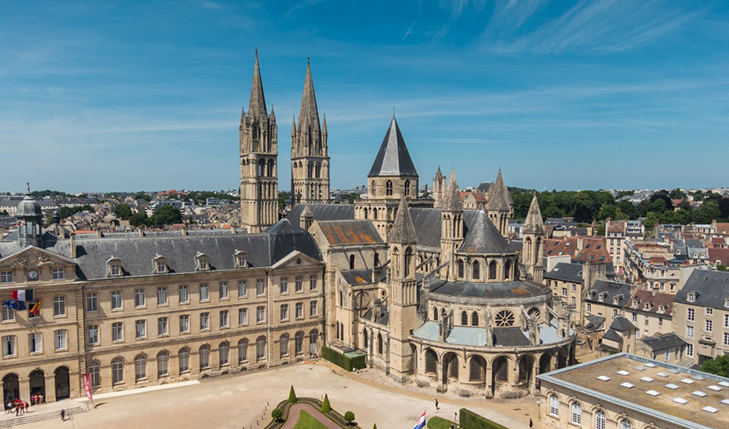
Additional Practical Tips for Walking Tours in Caen
- When to Visit:
Spring and early autumn offer the best weather for walking—mild temperatures and fewer tourists. Summer can be busy but lively. - Best Time of Day:
Early mornings reveal calm streets and soft light; late afternoons bring golden hues perfect for photos. Avoid midday in high summer to escape crowds. - Footwear & Clothing:
Wear sturdy walking shoes with good grip. Normandy’s weather is famously changeable—carry a compact umbrella or rain jacket. - Navigation Aids:
Download offline maps or walking apps like VisitSights or Explorial before arrival. The tourist office at Place Saint-Sauveur offers printed guides and friendly advice. - Transport to Start Points:
Caen is walkable from its main train station; local buses run frequently for longer distances. The Twisto bus system app is invaluable for real-time schedules. - Booking & Discounts:
For guided tours or ticketed abbeys/castles, booking online can save time and sometimes money. Student, senior, and group discounts are often available. - Photography Tips:
- Use early morning light for soft shadows and less crowded shots.
- Look for details: carved doorways, faded signage, ivy-covered walls.
- Bring a wide-angle lens for narrow alleys and towering architecture.
- Respect private properties—ask permission if you’re unsure.
Walking through Caen is more than just a tourist activity—it’s a journey into the heart of Normandy’s resilience, art, and daily life. Each alley, courtyard, and abbey holds stories whispered across centuries, waiting to be discovered by curious feet and attentive eyes.
I left Caen with more than just photographs—I took away a deeper connection to the city’s soul. I invite you to lace up your shoes, open your senses, and let Caen’s hidden corners reveal their timeless tales.
